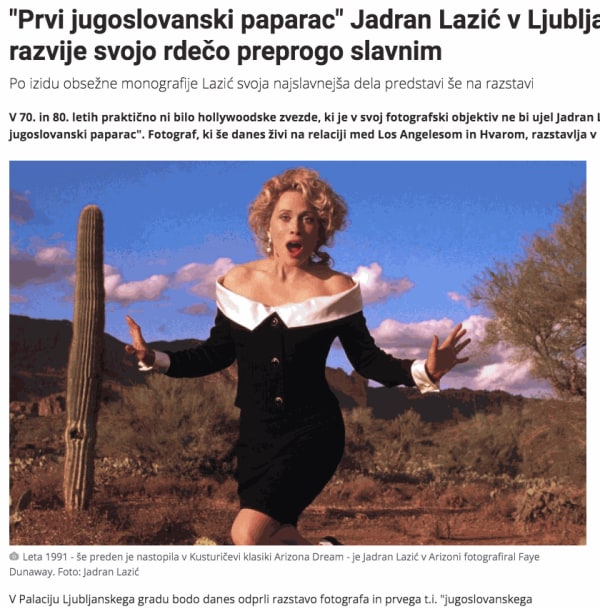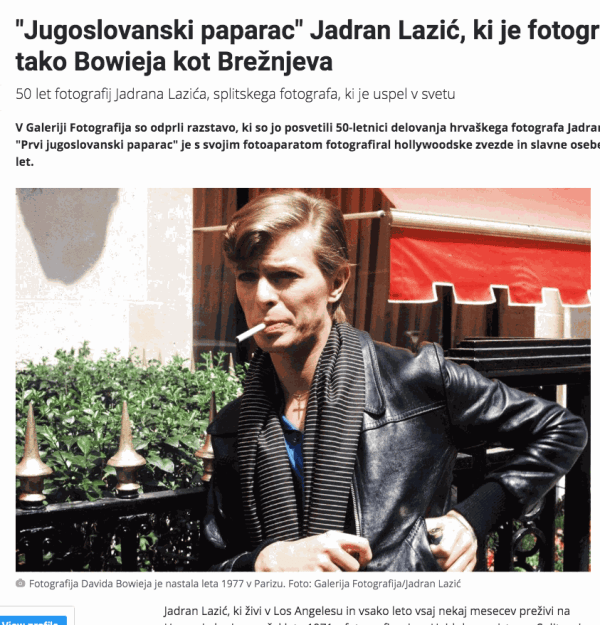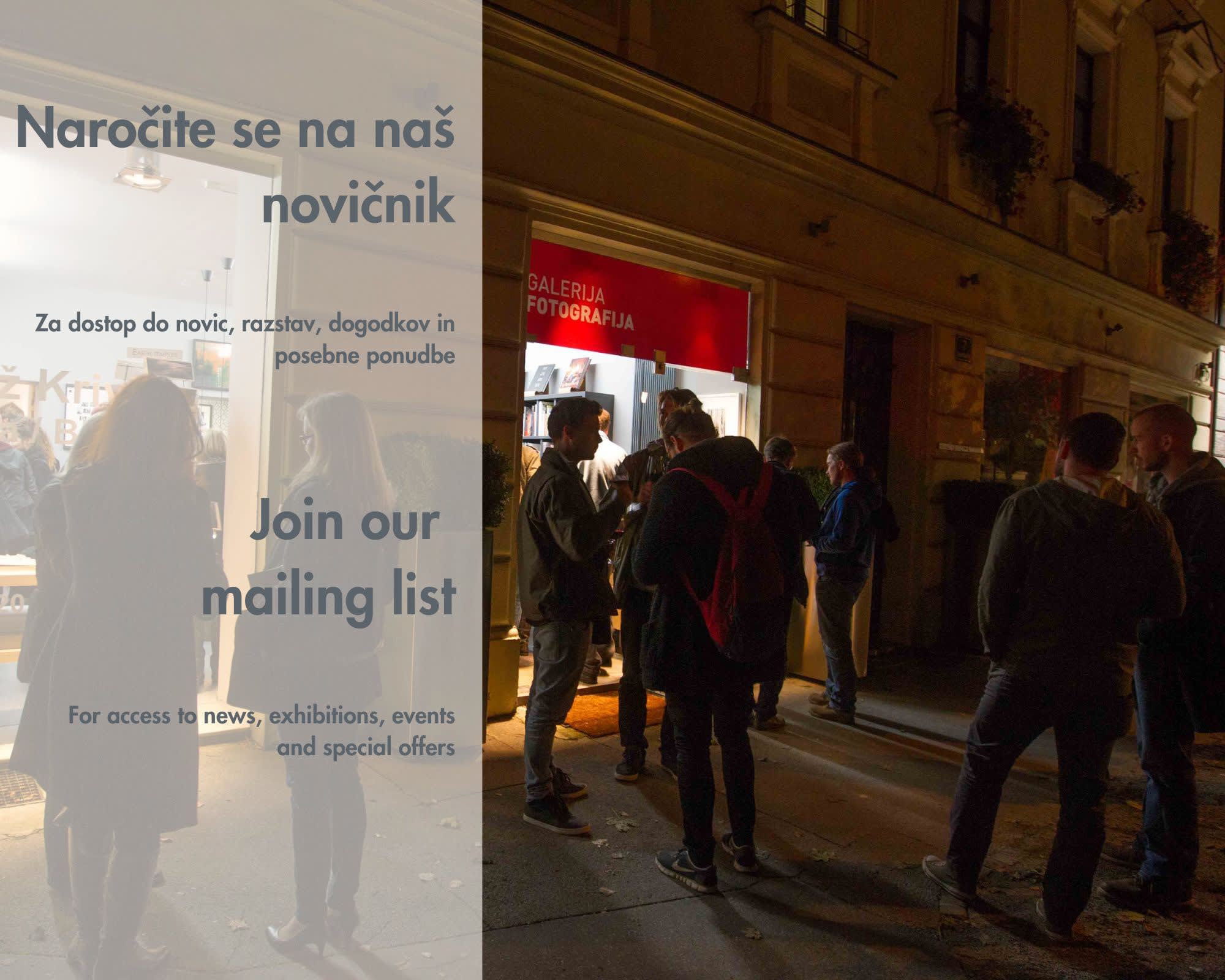Jadran Lazić
The great John Huston hired me in 1980 as one of the main actors in his movie "Escape to Victory". Along with this privilege, filming a majority of the movie in Budapest behind the famous "Iron Curtain" was a pure bonus, since back then only a few people knew my face so between the shoots I had a chance for leisurely strolls throughout the City. However, almost immediately as I stepped out of the hotel, a kid ambushed me on the street with a camera that politely said hi and started talking me into posing for him. He wasn't a typical paparazzo, on the contrary, he was not only polite, but also charming and funny, yet obviously unyielding. I had no choice but to say yes. Little did I know how that would be only my first encounter with Jadran Lazić.
- Sylvester Stallone
In the short history of photography, the paparazzo has played the role of hunter combing through jungles full of nameless plants in a search for a four-leaf clover. As Walter Benjamin predicted long ago, he returns laden with game which is only of value to the trader. Developing this train of thought, Benjamin adds that "indeed the time seems not far off when there will be more illustrated papers than game and poultry shops." Take a hard look at how times have surpassed the prophetic writings of this hapless philosopher!
Fleeing from the banal fate of ending up as a local photographer in his homeland, Jadran Lazić joined the tribe of sensation hunters in Paris in the early 1970s. This is the story of a young man who made his way from anonymity to fame - one of the cruelest trajectories one can traverse in our time. But his eyes saw beyond his Minolta: while staring into the frivolity of the celebrity system and the sad fate of many a wannabe star, he meticulously built protective walls around his decency. That is why his book functions as a counterpoint - a result of the collision between photographs and words, between images of sensation and the truth behind them, between glittering appearances and the anxiety within.
In the service of the major agencies competing in an industry that offers a special experience to consumers around the world, the paparazzo turns the public into the private, so tabloid readers can enjoy watching their idols wriggling in the trap of ritualized everyday life. The paparazzo was the one who revealed to Canadian citizens the sinful inclinations of Canada's First Lady, the one who photographed the most famous American widow during her nocturnal adventures. It was the paparazzo, again, who caught the irresistible Marlon Brando with his potbelly, staggeringly drunk... So what? It's hard to tell. These are all the pieces that make up the mosaic of our world.
One might say, with the swagger typical of this profession, that the paparazzo is a sort of a hero of democracy, who debunks popular myths and sends celebrities into panic for the pleasure of the faceless masses. In the extraordinary he finds the banal; in the familiar, he searches for the unknown; in the sublime, he seeks the despicable. Then the big magazines publish his work to illustrate their perpetual "after all, we're all human" philosophy. Jadran Lazić sees the paparazzo's fate as merely part of his journey and coming of age. He weaves an intimate story with the man or woman he's photographing - a story that ends with a moral catharsis of sorts: now that I've been through the paparazzo experience, I am more complete as a man. Jadran Lazić discloses with disarming spontaneity the truth about himself, about a calling and a world that, until now, we didn't know.
An excerpt from the text by Veselko Tenžera
-
 Jodie Foster, 1977
Jodie Foster, 1977 -
 Ornella Muti, 1978
Ornella Muti, 1978 -
 Beba Lončar, 1974
Beba Lončar, 1974 -
 David Bowie, 1977
David Bowie, 1977 -
 Bianca Jagger and David Bowie, 1977
Bianca Jagger and David Bowie, 1977 -
 Pele, 1980
Pele, 1980 -
 Jack Nicholson, 1991
Jack Nicholson, 1991 -
 Kirk & Michael Douglas, 1980
Kirk & Michael Douglas, 1980 -
 Richard Gere, 1979
Richard Gere, 1979 -
 Raquel Welch, 1975
Raquel Welch, 1975 -
 Boris Dvornik, 1973
Boris Dvornik, 1973 -
 Mišo Kovač, 1973
Mišo Kovač, 1973 -
 Tereza Kesovija, 1973
Tereza Kesovija, 1973 -
 David Bowie, 1977
David Bowie, 1977 -
 Sophia Loren, 1977
Sophia Loren, 1977 -
 David Bowie, 1977
David Bowie, 1977 -
 Robert De Niro, 1975
Robert De Niro, 1975 -
 Hajduk, 1973
Hajduk, 1973 -
 Leonid Breznjev, pogreb / Leonid Breznjev, Funeral, 1982
Leonid Breznjev, pogreb / Leonid Breznjev, Funeral, 1982 -
 Jack Nicholson, Cannes, 1981
Jack Nicholson, Cannes, 1981 -
 Roberto Rossellini & Martha Keller, 1977
Roberto Rossellini & Martha Keller, 1977 -
 Peter Sellers, 1980
Peter Sellers, 1980 -
 Jack Nicholson & Jessica Lange, 1981
Jack Nicholson & Jessica Lange, 1981





























